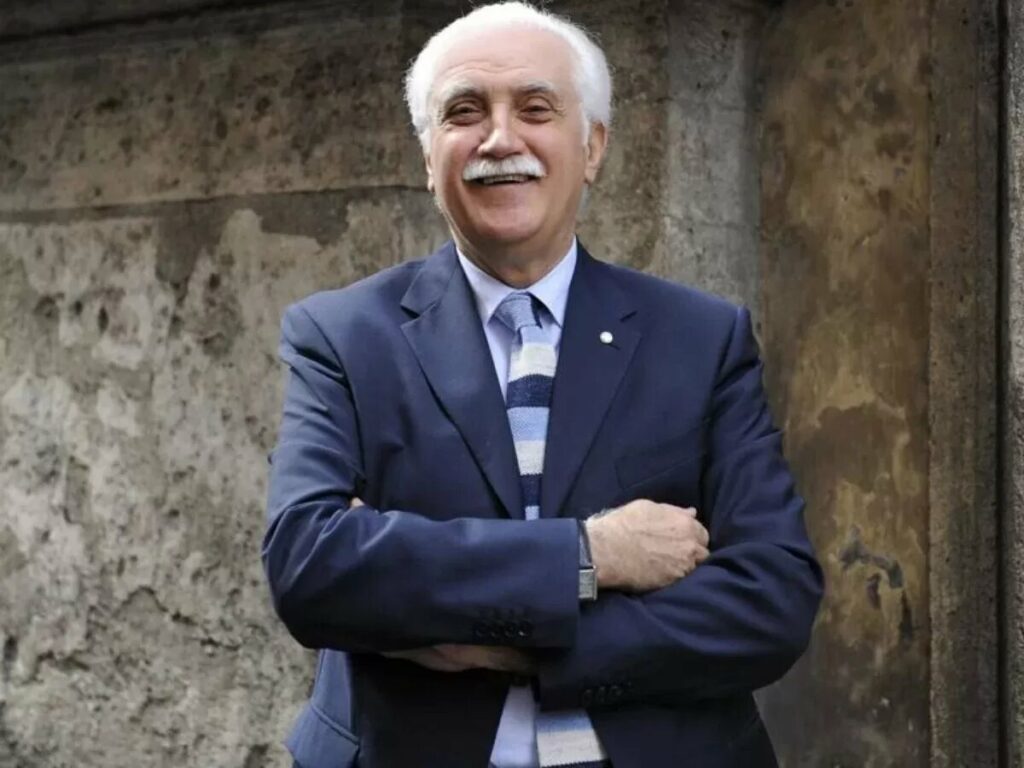Earlier this year the Canadian Centre on Substance Use and Addiction (CCSA), published a new alcohol guideline which suggested limiting alcohol consumption to two drinks per week, sparking outrage among Canadians. For Italian-Canadians, this may be even more shocking. Drinking is part of Italian culture as it’s customary to enjoy alcohol before, during and after food consumption. As we know from our previous piece ‘Vermouth Is About To Be Everywhere,’ Italian drinking rituals like aperitivi are traditions that date back hundreds of years. Keep reading to see Italian nutritionist and doctor, Professor Giorgio Calabrese, and Chef David Rocco’s thoughts on this new guideline and our take on how to drink responsibly the Italian way.

Alcoholic versus non-alcoholic drinks
The key to drinking is moderation. For Italians, the best way to drink is by sticking with quality beverages over processed ones with added sugar and flavours. Nowadays, more and more millennials and Gen-Z’s are avoiding alcoholic drinks altogether and prefer a sugary mocktail substitute. They find non-alcoholic drinks are a healthier way to participate in social rituals while staying physically and mentally fit. It is worth noting that many of these youths have grown up in places or cultures that, unlike Italy, promote binge drinking and drinking to excess, which may be why they associate drinking with poor mental and physical health.
Italian culture embraces moderate drinking and celebrates the cultural quality of alcohol. This often leads to less shame and stigma around drinking and alcohol abuse, suggesting there is less demand for alcohol-free “party drinks”.
How much wine is too much?
Although many think choosing a non-alcoholic drink over an alcoholic one is the healthier option, Professor Giorgio Calabrese begs to differ. As a famous Italian nutritionist and doctor, Calabrese is an active member of the New York Academy of Sciences and the American Association for the Advancement of Science in Washington, specializing in food science.

“Non-alcoholic drinks are not an alternative to wine because of their high sugar content. It’s true that alcoholic drinks can damage your health, but non-alcoholic drinks can damage just as much by causing hepatic steatosis and diabetes,” says Calabrese. “Drinking water before, during and after meals is a healthy habit. Alcoholic beverages should never be consumed on an empty stomach or before 18 years of age, which is when one’s liver becomes able to metabolize alcohol and all its enzymes. My rule for good wine is the following: drink water and taste wine. Wine is liquid food which contains nutrients as well as calories. Moderation is the key word, even when drinking wine.”
Professor Calabrese believes that sticking to two drinks per week is a good measure to take, especially if someone tends to choose drinking spirits or beer over water to quench one’s thirst. However, if wine is the drink of preference, one glass per meal every day is acceptable, so long as it’s not on an empty stomach. This is because the alcoholic content of the wine increases the absorbance of the wine’s antioxidants.

How does food and drink connect us?
The main reason why many people choose to go out and drink is because of the social event itself. Even without drinking, this has become a habitual process for social connection. Take David Rocco for example, an acclaimed Canadian-Italian chef and television personality known for his restaurant Bar Aperitivo in Toronto. His focus as a restauranteur is connecting people through food and drink, and the Italian cultural experience.
“Generally, Italians like to have wine with their meals or with a little snack and definitely with each other,” says Rocco. “Part of this culture is the connectivity and happiness it gives us by having a glass of wine with food and company. It allows us to feel emotionally recharged by sharing wine and a meal and spending time with each other.”

“Growing up in an Italian-Canadian household, many of us had the good fortune of seeing our grandparents and parents live long and healthy lives that sometimes went well into their 90s. When asked, many would give credit to the one glass of vino they would have with lunch and dinner, and of course their Mediterranean diet. It’s something I’ve always witnessed throughout my life and it always comes back to a Mediterranean diet, moderation, exercise and personally, a glass of wine with a meal.” says Rocco.
No matter where your opinion lies on the alcohol guideline, there’s no denying the importance of maintaining a healthy drinking lifestyle. Moderation should always be the priority, along with choosing clean drinks with simple ingredients. These are great ways to still drink responsibly and show us that how much we should drink isn’t so black and white. Italian drinking traditions and rituals remind us that drinking isn’t about how drunk you get, it’s about the quality of the product and the people you share the experience with.



Add a comment